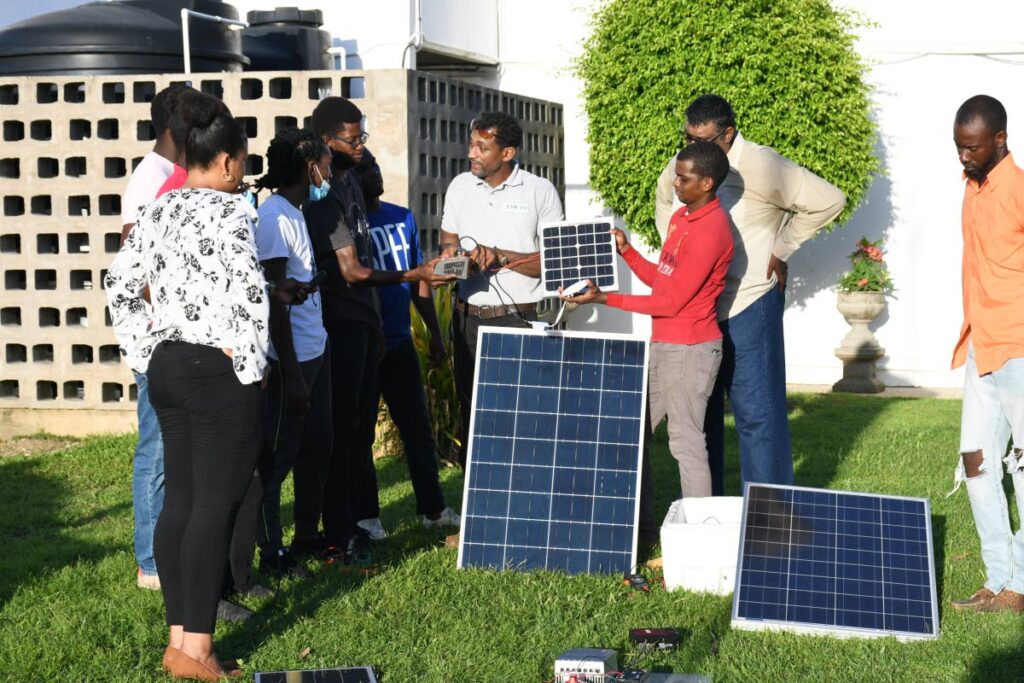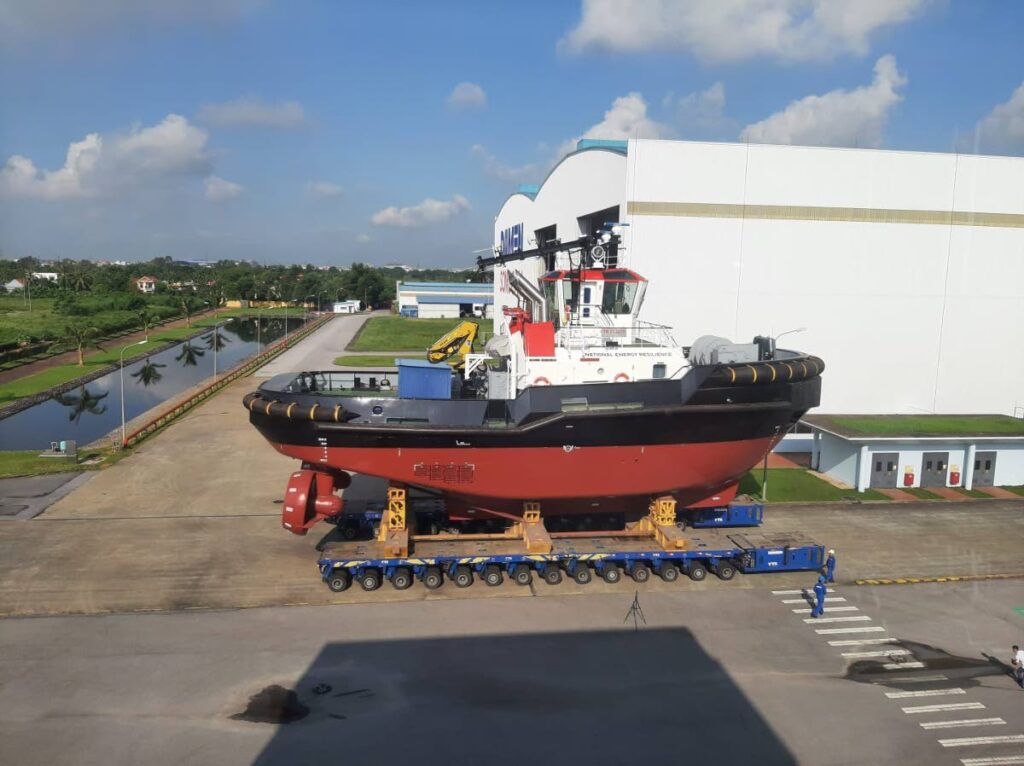This is part one of a two-part series on the country’s energy transition.
TT has vowed to reduce its carbon emissions by 15 per cent by 2030 as part of the Paris Agreement’s National Determined Contributions to help ward off further devastation from climate change.
National Energy, a subsidiary of the National Gas Company of TT, is tasked with developing the country’s energy-based industries. Newsday spoke with Dr Vernon Paltoo, president of National Energy, about plans for an overall energy transition to the goal of net-zero carbon emissions.

Traditionally, National Energy would have worked on the development of the petrochemical industry, specifically Point Lisas and Union Industrial Estates, and developing the initial methanol, ammonia and steel plants.
Now, as the energy industry globally is changing, it’s working on developing the renewable energy sector, creating energy efficiency in businesses, and overall carbon reduction in the country.
Paltoo said in an interview on October 1, that, recognising TT’s commitment to carbon reduction, and “the finite nature of our gas resources,” five-seven years ago, “We took a deliberate strategy for developing low-carbon industries.”
Renewable energy
Renewable energy is the first way the country is moving away from using natural gas as fuel for power generation.
The primary renewable energy project is Project Lara, the first utility-scale solar photovoltaic (PV) installation, which will convert light into electricity.
It’s a 112-megawatt facility based at Brechin Castle, Couva, and Orange Grove, Trincity. The Brechin Castle station will produce 92 megawatts and the Orange Grove one will be 20 megawatts.
“This will be a significant project, not just for National Energy but really the country, because it represents the first utility-scale PV project,” Paltoo said.
It’s not National Energy’s first PV project. Last year, it finished installing a solar canopy on the Preysal National Petroleum service station by the Point Lisas highway, which opened in September 2021.

Paltoo said the service station is almost entirely solar-powered.
“That’s 320 panels and 100-kilowatt installation.” During the major blackout earlier this year, he said, “That was the only service station in Trinidad that was running, still because it had battery backup on that station.”
That project was a stand-alone PV facility, whereas Project Lara is a utility-scale facility, being built to put power supply into the T&TEC power grid. It will be the first of its kind in TT.
“It’s like a power station. That project has been in development for about two years now. The minister (of Finance) would have spoken about it extensively in the budget presentation.”
Paltoo said the plant will essentially displace gas, traditionally used in power generation. That gas can now be used for higher-value products for the benefit of the country, such as petrochemicals including ammonia and methanol, which earn TT significant revenue.
“We are now able to save that gas and use it elsewhere…In terms of cost, from an unsubsidised point of view, it is an economical proposition for the country, because we have low-cost fuel and low-cost power at present.”
Project Lara is being built by a consortium of two of the biggest energy companies operating in Trinidad, BP and Shell, and also BP Light Source, an arm of BP that specialises in renewable energy. The companies were chosen through public tender by the Ministry of Energy.
With the available technology, the country cannot switch to a full solar-energy power, because lithium-ion batteries, for energy storage, are so expensive. Paltoo said battery storage can increase the cost of a project by as much as 100 per cent.
“It cannot be exclusively solar. It has to be a mixture, because at night there is no sun. We have to go back to fossil fuels at night unless there is battery storage.”
Project Lara, like most utility-scale projects, does not involve battery storage.
Paltoo said solar power is a balancing act.
“You optimise the resources that you have, from an economic perspective, to get the best output at the lowest cost.”

He said converting to renewable energy is not simple, or: “We would have done it a long time ago:
He said it’s complex “to balance and create the necessary engineering tasks” for “an uninterrupted supply of power that we are accustomed to.”
Carbon reduction
Renewable energy is just the first step in carbon reduction.
“What we want to do is create a sustainable energy industry for the future,” Paltoo said.
A sustainable energy industry would no longer require natural gas to provide revenue for the country. He said National Energy is building a strategy and framework to allow the country to transition from natural gas into low-carbon fuels while maintaining TT as a major commodity producer, even in ammonia and methanol.
“That is not something that happens today or tomorrow,” Paltoo said. “It is a long-term strategy that we build, and renewable energy is the first building block.” Then there’s energy efficiency “where we have to live or start producing outputs for less energy, and that comes with making better use of the power and the energy we currently use.”
TT is currently a “significant user of energy” on a domestic and industrial scale.
National Energy is developing a project called Super ESCO (Energy Services Company) to go into companies and do an audit on how to reduce energy use.
“So it’s a win-win situation, where we work with companies and we will be able to drive a change, so they are able to use less energy. And again, as we save energy, it means that we have access to our fossil fuels to get higher-value products…It also means we are reducing the carbon footprint of these industries.”
Asked if Super ESCO has chosen the companies, Paltoo said background work had been done, but it would be premature to discuss which companies would be audited.
Carbon cutting: the big picture
National Energy has a long-term goal for carbon-cutting: eventually, the country will transition away from natural gas completely.
Paltoo says natural gas will continue to be an important resource.
“However, understanding the global impact of fossil fuels, as well as the economic value proposition to transition to a low-carbon economy, what we are doing is building a framework and a long-term plan that will allow this country to eventually become a low-carbon or decarbonised state in terms of energy usage and energy production.”
National Energy is working with the Inter-American Development Bank to create a roadmap and strategy to create a hydrogen economy in TT. That study is close to completion.
“We are going to move away from fossil fuel and go into clean hydrogen as the fuel of the future. using natural gas as the transition fuel.”
In decades to come, Paltoo foresees, “We can transition our entire industrial sector, transportation sector, our power-generation sector into low-carbon clean fuels, using hydrogen.”
Clean hydrogen is created in several steps using renewable energy and electrolysis (using electricity to split water into hydrogen and oxygen). That hydrogen will be used in power generation and transport.
“That is where the world is heading, and we are well positioned in TT, because we have the infrastructure, the energy infrastructure, and the gas infrastructure already. “ The country already produces almost two million tonnes of hydrogen a year for the petrochemical industry, he explained, and now it can take that hydrogen, “which is produced currently in natural gas, and gradually reduce the amount of carbon footprint in that hydrogen production to almost zero.”
That, he explains, involves building a sustainable renewable energies industry.
Keep posted to Newsday for part two of the country’s energy transition story on hydrogen and the creation of green hydrogen. These stories are written as part of Rachael Espinet’s journalism fellowship with Climate Tracker.
This story is part of Caribbean Energy Transition Journalism Workshop. Rachael is one of the finalists, meet the full team here!
